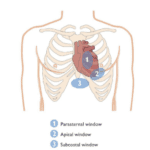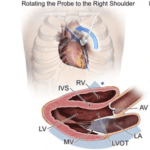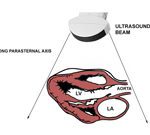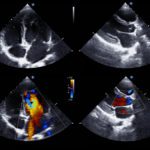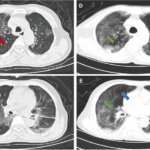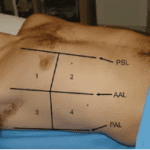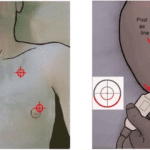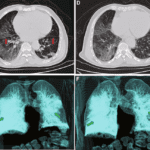Case Study:
A 66-year-old male patient was recommended a AAA screen by his primary care physician. He is a known smoker and has been on antihypertensive medications for the past 20 years. The following view was one of the views obtained in the transverse plane in the region of the mid abdominal aorta.
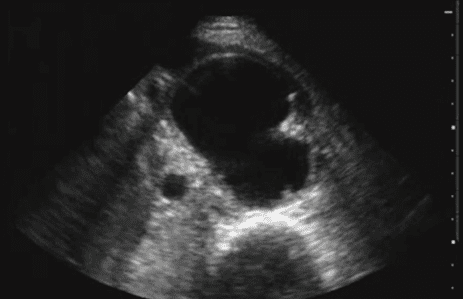
Based upon the image obtained in the transverse plane, what is the type of abdominal aneurysm seen?
A. Fusiform aneurysm.
B. Normal abdominal aorta and IVC.
C. Arterio-venous fistula.
D. Berry or saccular aneurysm.
Answer: D
Explanation:
An abdominal aortic aneurysm is a ballooning of the wall of the abdominal aorta due to a weakening in its wall. There are two types of aneurysms seen in the abdominal aorta based upon the shape of the aneurysmal segment. The more common type is the fusiform aneurysm which balloons out circumferentially. The less common type is the saccular or berry aneurysm. They resemble berries and have a large round dome and a narrow neck that connects the aneurysm to the main artery.
Smoking has been identified as one of the major risk factors to develop an aneurysm. Other common risk factors include old age, high cholesterol, hypertension, diabetes, abdominal trauma, Marfan’s syndrome, Turner’s syndrome, and a family history of AAA. Males are affected 4 times more than females. When measuring measure from outer wall to outer wall and include the thrombus (if present) in the measurement.
Interested in proving your expertise in Abdominal Aortic Aneurysm (AAA) POCUS? Check out our AAA POCUS Certificate here.






